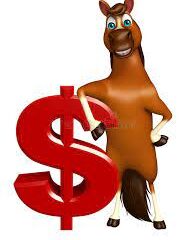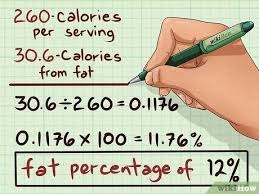The Truth Behind “Guaranteed NSC”

Because of the increase in diagnosed cases of metabolic conditions in horses NSC has taken center stage in marketing departments. What is NSC and what role does it play are questions for their own posts since it’s a fairly complex subject. This article will remain focused on what to look for when finding the right feed for a metabolic horse.
Just about every major feed manufacturer highlights the NSC in their feed on their website or spec sheets but unless NSC is listed on the guaranteed analysis in a specific format it doesn’t mean anything.
Horses are Considered Livestock
Horses are deemed non food livestock by most state agricultural departments. Horses have earned this definition because if a horse is dumped into a pasture with adequate grass or hay they will live a natural life without any supplemental feed. Since horses aren’t going to be eaten by anyone in the United States you can feed anything you like to a horse. Further, since the government doesn’t care what you feed your horse there are virtually no regulations on ingredients, efficacy or outcomes.
If you feed a supplement to your horse and it dies there are no legal consequences to the manufacturer of said supplement as long as the ingredients on the tag are the same as the ingredients in the bag. If your horse dies because the feed was contaminated with bovine drugs you’ll probably be able to recover the value of the horse if you can prove it was the feed that caused it. Good luck.
In large part what we feed our horses is controlled by the rule of caveat emptor, “let the buyer beware” meaning that the ultimate responsibility for what goes into our horse rests with us.
This does not mean that there are no regulations. There are some guidelines and consequences for not providing what you say you are going to provide in the form of a feed tag. Let me remind you that ANYTHING can be in a bag of feed but if it’s in the bag it must be listed on the feed tag’s Guaranteed Analysis. If it kills your horse but it’s listed on the tag then you’ve missed it.
Dogs are companion animals and require supplemental feeding to remain healthy so they are governed by an entirely different set of regulations. If you make dog food you either have to produce your own research results or prove that your formula follows established research guidelines.
For horses I can mix up a batch of corn, oats, barley and Lucky Charms cereal and call it Jim the Feed Guy’s Magically Delicious Horse Feed. As long as I list the ingredients on the tag I’m in compliance.
Here’s how enforcement works in most states.
Here in Pennsylvania all that is required to become a licensed livestock feed manufacturer is a registration and a $25 annual feed. That’s it. There are no inspections, no sanitary requirements, nothing. This does not mean that there are no regulations or enforcement to give us some level of assurance if not protection.
There is an organization known as AAFCO, American Association of Feed Control Officials and most major horse feed providers are members. I’m going to lift their mission statement directly from their homepage because it says it all.
“The Association of American Feed Control Officials (AAFCO) is a voluntary membership association of local, state and federal agencies. Our members are charged by their local, state or federal laws to regulate the sale and distribution of animal feeds and animal drug remedies.”
If you’re really interested in enlightenment visit their website and learn how enforcement works for pet food and livestock but I’ll summarize the process as it relates to the consequences of a feed tag compliance violation and why “guarantees” many consumers rely upon are not guarantees at all.
There is one key word in the AAFCO mission statement, “voluntary”. AAFCO is not a regulatory agency and has no powers of enforcement. However, if a state department of agriculture chooses to use their guidelines for enforcement that agency does have the power to enforce the guidelines. A few states have more stringent regulations. I’m not going to delve into those regulations but discuss some of the enforcement process so that you have a better understanding of the difference between “guaranteed” on a website and “guaranteed” on a feed tag because many feed companies are banking on the fact that you probably don’t know the difference.
Guaranteed Analysis
On every bag of feed there is guaranteed analysis. Typically it’s found on a tag but some GA’s are printed on the bag. This GA guarantees that if tested, whatever is in that bag will meet or exceed the values listed in the GA. States don’t test websites or literature. The rules are that a manufacturer is liable for contents of the bag meeting the values of the GA. If it ain’t on the tag it ain’t in the bag.
The AAFCO manual provides directions on what is to be displayed on a feed tag as well as how and where. These rules are different for each species so horses have their own feed tag rules.
There is a list of essential nutrients that are REQUIRED to appear on a guaranteed analysis. NSC is not one of these values. In fact, NSC is not even recognized by AAFCO so providing NSC value as “NSC” is meaningless from an enforcement point of view.
Dietary Starch and Sugar are not “essential” nutrients so are not required to appear on a GA for a horse. However, Dietary Starch and Sugar are recognized nutrients so if they are voluntarily displayed on the GA a manufacturer is at risk for penalties if they are not in compliance.
NSC is determined by adding the dietary starch and sugar values together. If dietary starch is 10% and sugar is 5% then total NSC is 15%.
If you are feeding a metabolic horse and “Dietary Starch” and “Sugar” is not displayed on the feed tag as a maximum value I wouldn’t trust it.
Here’s how it works.
Taking Samples
It’s a beautiful spring day and Agent Jones from the State Department of Agriculture is doing her job so she pulls into the parking lot of Lucky Charms Feed Store and pulls out her sample kit. Agent Jones identifies herself before proceeding into the warehouse or store and shoves a sampling probe into bags of feed taking note of the GA, manufacturer and production lot number.
This sample is logged before being sent to a certified lab for analysis where it is tested.
The Consequences of Non Compliance
When the analysis comes back if there are any variances there may be consequences to the manufacturer.
Since dietary starch and sugar are listed as “Max” values there is no allowance for exceeding either value. If the dietary starch on the tag is listed at 10% and the test shows a value of 10.5% the dealer and the manufacturer will get a letter of notification to “stop sell” which is exactly what it means. All bags of that feed in that production lot must be pulled from circulation and dumped. The manufacturer must make a best effort to recover all remaining bags of that production lot. Proof of disposal is required.
This can mean some considerable expense so most responsible manufacturers do their best to ensure the accuracy of their reported values. The good news is that because getting it wrong can be an expensive mistake most manufacturers that list dietary starch and sugar will formulate for 85% to 90% of those values to allow for variation.
Advertised NSC Values are Meaningless
Any idea what happens to a manufacturer who lists NSC on their website or prints “Low Starch” on their feed bags who don’t list “sugar” and “starch” on their feed tag when the analysis shows a greater amount of sugar and starch than stated? Not a damned thing. If it’s not on the tag the regulatory agency won’t even test for it.
Some manufacturers get really shady with listing NSC because they will actually print an NSC value on the feed tag. If you look for it you may see NSC listed at the very bottom of the GA on the tag. It will be followed by an asterisk or two with a little note indication that “NSC is not recognized by AAFCO” or something along those lines. Sometimes they will get really tricky and display it as “NSC (dietary starch + sugar)”. This really fires me up because it’s intentionally misleading.
So what about their “guarantee”? Great! Are you going to pay $85 for a feed analysis to get a refund on a $20 bag of feed? Do you even know where to get an analysis done? If you have an insulin resistant horse who founders from “low starch” feed what is your recourse? Sue them? Maybe it was just that one bag. That’s hardly going to win a lawsuit. What will you get for your beloved backyard pony if you do win? How much is a laminitic 23 year old POA worth? $100?
Ask yourself this question, “If a feed manufacturer is advertising an NSC value on their website why don’t they put it on their Guaranteed Analysis?”
Better yet, get in touch with your feed manufacturer and ask THEM. You will get answers ranging from ridiculous to plausible but none of them hold water.
There are two follow up questions to ask regardless of what answer you get from the first question.
The first is, “What are the consequences of having their feed tested and getting out of compliance results?”
The second is, “Why do Purina and Nutrena list starch and sugar on their feed tags?”
I’m not calling out any one manufacturer. I’m not even claiming that they are misleading anyone by not putting things on feed tags. Maybe it really is because there isn’t enough room on the tag. I’m just explaining how the regulatory system, limited as it is for horses, works.
Whatever conclusion you come to is yours to own. I just happen to believe that the best consumer is an educated consumer.


